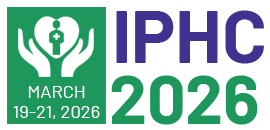Title : Rapid antigenic diagnostic tests: The added value for SARS-CoV2 case detection in Senegal
Abstract:
Senegal detected its first case of SARS-CoV-2 in March 2020. As of November 1, 2021, the country confirmed 73,920 cases and 1,878 deaths. When the country faced a third wave of the epidemic, resulting in the highest number of cases recorded in Senegal, the two main laboratories involved in RT-PCR detection (located in the Dakar and Thies regions) were overwhelmed. In response, the country validated the usage of antigen-detecting rapid diagnostic tests (Ag-RDTs), which were implemented at the district level. We describe the added value of this strategy.
Methods
Samples collected at the local level for RT-PCR were sent to Dakar or Thies. Following country guidance, RT-PCR was performed for symptomatic patients and asymptomatic travelers, while Ag-RDTs were performed only for symptomatic patients seen at healthcare facilities. To evaluate Ag-RDT implementation, indicators were identified, data collection tools were developed and shared, and analysis was automated, before launching Ag-RDTs in the country.
Results
Ag-RDT data collection was launched on August 1. Testing was conducted in 79 districts. As of October 29, 2021, 19,920 persons were tested, with an average of 196 tests per day. Of these, 6,326 (32%) Ag-RDTs were positive. During the same period, 194,035 RT-PCR tests were performed on both symptomatic and asymptomatic patients/travelers, with 11,619 (6%) positive.
Conclusion
Decentralization of testing with Ag-RDTs usage was expected to improve detection in the country. Our analysis showed that increasing awareness of Ag-RDTs is still needed to ensure routine use for detection. Overall, the use of Ag-RDTs complemented SARS-COV-2 detection in Senegal, where RT-PCR usage is predominant. The higher positivity rate associated with Ag-RDTs may be related to the decision to test only symptomatic persons. Additional analyses need to be conducted to evaluate the added value of Ag-RDTs in diagnosis.
Senegal detected its first case of SARS-CoV-2 in March 2020. As of November 1, 2021, the country confirmed 73,920 cases and 1,878 deaths. When the country faced a third wave of the epidemic, resulting in the highest number of cases recorded in Senegal, the two main laboratories involved in RT-PCR detection (located in the Dakar and Thies regions) were overwhelmed. In response, the country validated the usage of antigen-detecting rapid diagnostic tests (Ag-RDTs), which were implemented at the district level. We describe the added value of this strategy.
Methods
Samples collected at the local level for RT-PCR were sent to Dakar or Thies. Following country guidance, RT-PCR was performed for symptomatic patients and asymptomatic travelers, while Ag-RDTs were performed only for symptomatic patients seen at healthcare facilities. To evaluate Ag-RDT implementation, indicators were identified, data collection tools were developed and shared, and analysis was automated, before launching Ag-RDTs in the country.
Results
Ag-RDT data collection was launched on August 1. Testing was conducted in 79 districts. As of October 29, 2021, 19,920 persons were tested, with an average of 196 tests per day. Of these, 6,326 (32%) Ag-RDTs were positive. During the same period, 194,035 RT-PCR tests were performed on both symptomatic and asymptomatic patients/travelers, with 11,619 (6%) positive.
Conclusion
Decentralization of testing with Ag-RDTs usage was expected to improve detection in the country. Our analysis showed that increasing awareness of Ag-RDTs is still needed to ensure routine use for detection. Overall, the use of Ag-RDTs complemented SARS-COV-2 detection in Senegal, where RT-PCR usage is predominant. The higher positivity rate associated with Ag-RDTs may be related to the decision to test only symptomatic persons. Additional analyses need to be conducted to evaluate the added value of Ag-RDTs in diagnosis.



